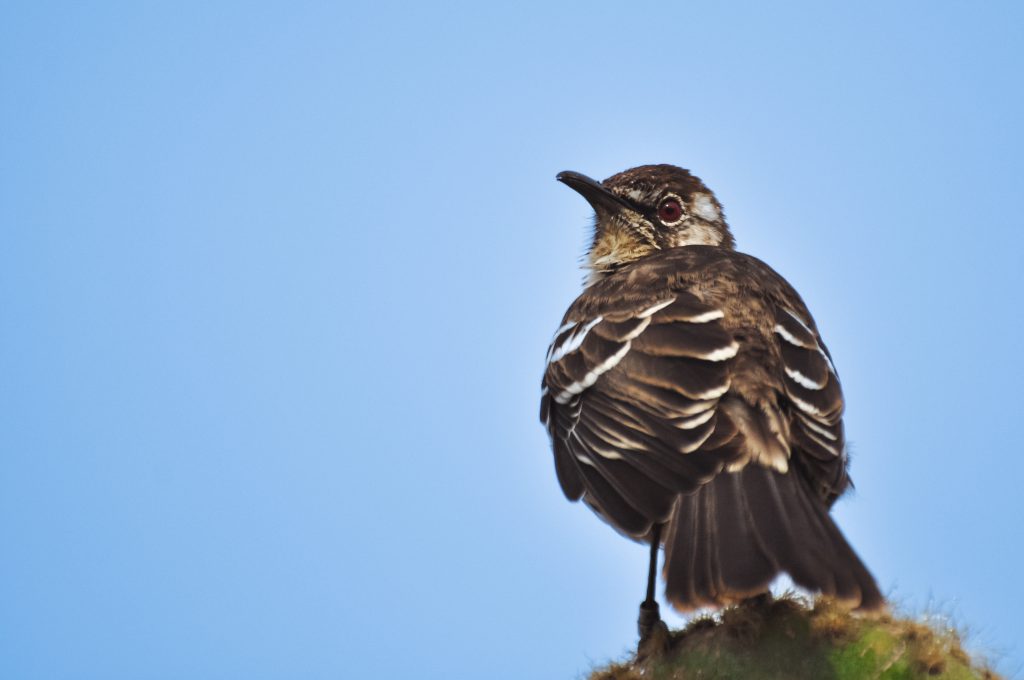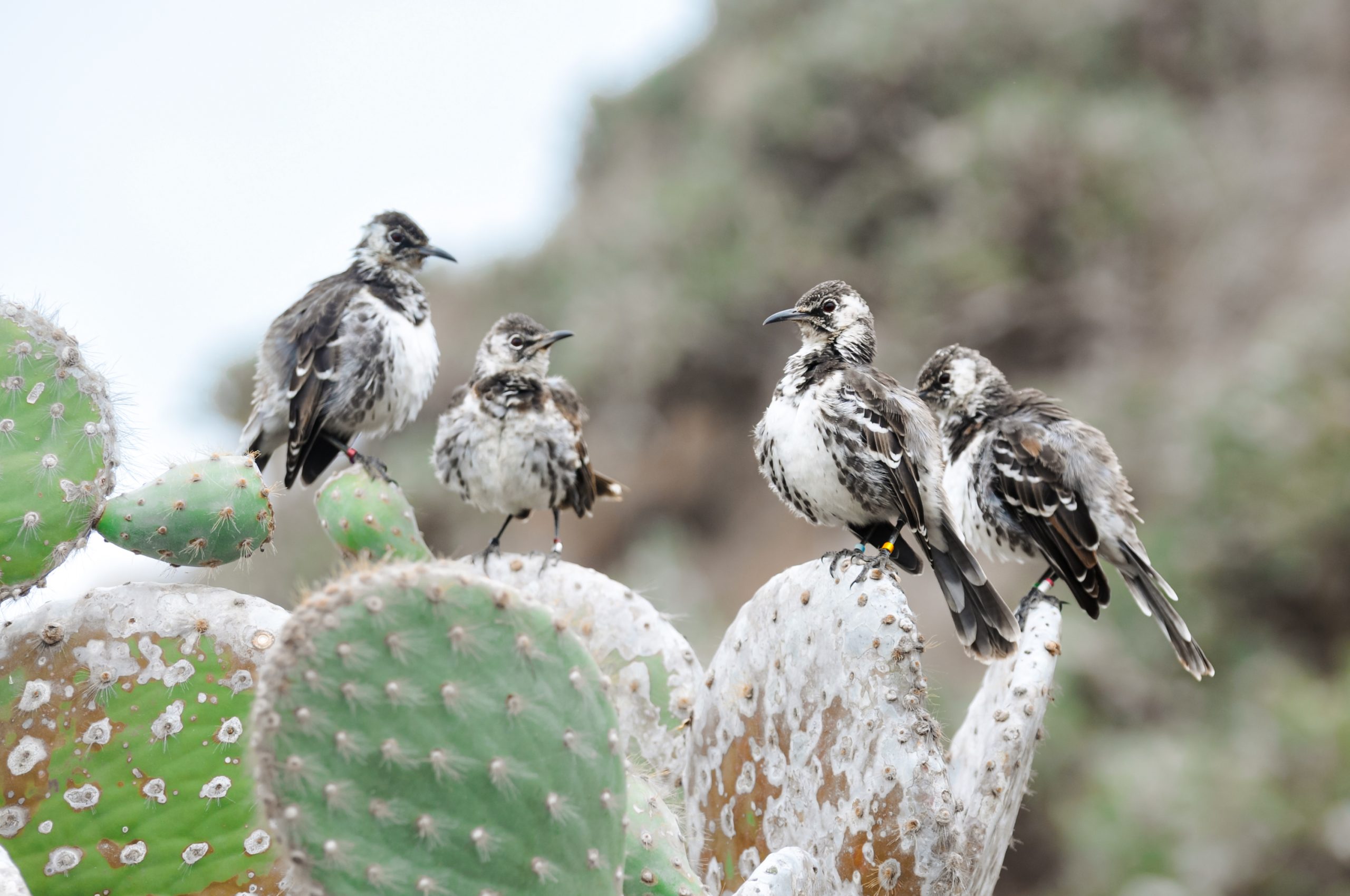Feature image: A family group of Floreana mockingbirds on Gardner Islet, Galápagos (Photo credit: Enzo M. R. Reyes)
Culture is often defined as the way of life—including customs and beliefs—of a particular group at a given time. While typically associated with humans, various aspects of culture such as music, art, literature, and languages are not exclusive to us. In animals, culture refers to learned behaviours and vocalisations passed socially across generations. Many social animals, such as whales, chimpanzees, and birds, exhibit cultural traits like tool usage and specialised vocal cues. Though animal culture differs from human culture, it shares key similarities in social learning and transmission.
Cultural evolution in bird vocalisations is well documented, with changes occurring over time and across regions. For example, North American white-throated sparrows recently shifted from triplet-ending to double-ending songs—a dialect that originated west of the Rocky Mountains and spread continentally. In small or fragmented populations, cultural evolution can be detrimental—as the limited number of tutors makes it difficult to transmit the original repertoire—leading to new song variations or maladaptive behaviours.
The Endangered Floreana mockingbird (Mimus trifasciatus) is a rare cooperative-breeding species endemic to the Galápagos Islands, and it likely inspired Darwin’s theories on evolution. Its main population vanished from Floreana Island just 50 years after his visit, leaving fewer than 300 individuals on two small offshore rocky islets—Champion (0.1 km2) and Gardner-by-Floreana (0.8 km2).

A major project by the Galápagos National Park aims to restore Floreana Island, including by reintroducing the locally extinct Floreana mockingbird. Birds from the two remaining populations will establish a third population on Floreana, thereby, reducing the risk of extinction. While ecological and genetic factors pertaining to reintroduction have been extensively studied for decades, behavioural aspects such as vocalisations have not received as much attention, despite the influence that this trait could have in the success of reintroduction.
A recent study published in Pacific Conservation Biology explored how the isolation of the two remaining populations—following extinction of the main population—may have accelerated cultural change. The study showed that the lack of connectivity between the two populations has led to the development of distinct ‘dialects’ in vocalisations on each island. This divergence in vocalisation patterns may have been influenced by differences in beak morphology between the populations, with birds from one population generally being larger than the other.
Furthermore, the study demonstrated how random variations in vocalisations between islands—known as ‘cultural drift’—could also have played a role in the divergence of vocalisations. The researchers tested this hypothesis by comparing recordings of the species from the 1960s with more recent recordings and observed differences in the vocalisations of the same population over time.
This study highlights the importance of considering behavioural aspects in conservation. The reintroduction of the Floreana mockingbird may encounter challenges due to vocal differences between the two source populations, potentially delaying the improvement in genetic diversity. For example, the reintroduction of individuals with different dialects could lead to individuals only pairing with those who ‘speak’ the same dialect, consequently slowing down group formation and gene mixing. However, further research is required as mockingbirds demonstrate great adaptability and can learn new vocalisations even in adulthood, which could aid in the integration of local vocal repertoires between the two source populations.
Further Reading:
Reyes E. M. R., M. Roper Michelle, C. Sevilla, D. Rueda, H. Brunton Dianne, N. H. Smith Adam, and L. Ortiz-Catedral. 2024. Cultural divergence and morphological variation of isolated remnant populations of the endangered Floreana mockingbird. Pacific Conservation Biology 30: PC23055. https://doi.org/10.1071/PC23055.






